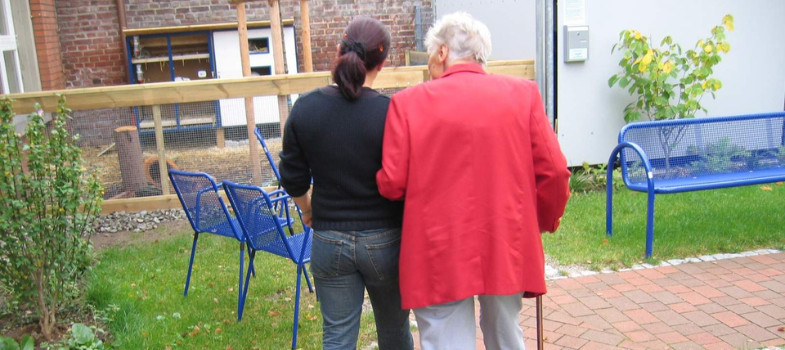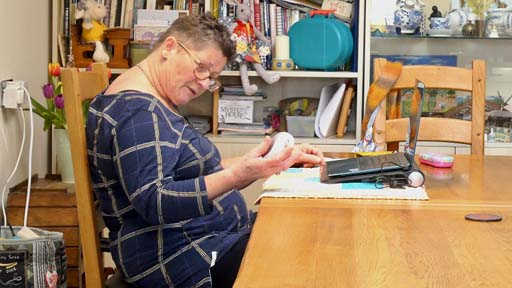3.4 Managing communication problems
There are a number of ways that communication problems can be managed, including the use of medication, speech and language therapy, and physiotherapy. Consider your role and that of other professionals in managing these.
Medication
Parkinson’s medication, such as levodopa, might help improve the volume and clarity of a person’s speech.
However, in some cases, Parkinson’s medication can contribute to speech problems. ‘On/off’ is a potential side effect of levodopa and some other Parkinson’s medication. ‘On’ means the person’s drugs are working and symptoms are well controlled, and ‘off’ is when there is suddenly no response to medication, and their symptoms become much more of a problem. Medication can also wear off slowly before the next dose.
As well as affecting movement, ‘on/off’ can affect speech and body language. For instance, a person’s voice may be louder and easier to understand when they are ‘on’, but be quiet and difficult to understand when they are ‘off’. This can be really frustrating for both the person with Parkinson’s and others around them.
Speech and language therapy
Speech and language therapists are healthcare professionals who can help with all aspects of communication, from facial expression and body language to speech and communication aids.
Speech and language therapy should be available to everyone living with Parkinson’s, so we suggest that you organise a referral for your client. The speech and language therapist may be able to suggest exercises and techniques to overcome some of the challenges that people with Parkinson’s are experiencing. They can also provide advice on alternative means of communication. These may include communication aids.
Physiotherapy
A physiotherapist will use physical treatments, including exercise, to help manage any stiffness in people’s joints and restore the strength in their muscles. This might help to improve people’s ability to move and make it easier to control their body language.
Action to take
Difficulties with communication can be upsetting and frustrating for the person with Parkinson’s and for those around them. But there are some basic things you might try to make life a little bit easier:
- Be patient and give the person affected time to talk. They may need extra time to talk and respond, so try not to interrupt them or walk away.
- Try not to talk for them, unless it’s absolutely necessary. Don’t insist they pronounce each word perfectly and avoid finishing their sentences.
- Take the lead in initiating conversation. Give people the opportunity to talk and encourage them to join in the conversation if it’s appropriate, but don’t pressure them to speak.
- Don’t ignore the person affected by asking someone else to speak for them.
- Remember that someone may not look or sound like they are interested in talking to you, but this may not be the case.
- Talk normally and don’t shout.
- Listen carefully.
- Vary the tone of your voice and relax. Stress can be heard in your voice.
- Use short sentences and stress key words. It will also help not to ask difficult questions or more than one question at a time.
- Make sure they can see and hear you.
- Be reassuring and help the person affected to relax if they are visibly stressed when trying to talk. For example, they might appreciate it if you hold their hand if they are having trouble speaking.
- If you didn’t understand what someone has said, ask them to repeat it - but louder or in another way. Try not to pretend you have understood if you haven’t.
- Try to avoid speaking above noise, such as a TV or radio, and try not to be too far away, for example, in another room when talking.
- Try not to make a person with Parkinson’s talk while doing another activity, such as walking. It can be difficult for some people to multi-task.
3.3 The impact of communication difficulties


